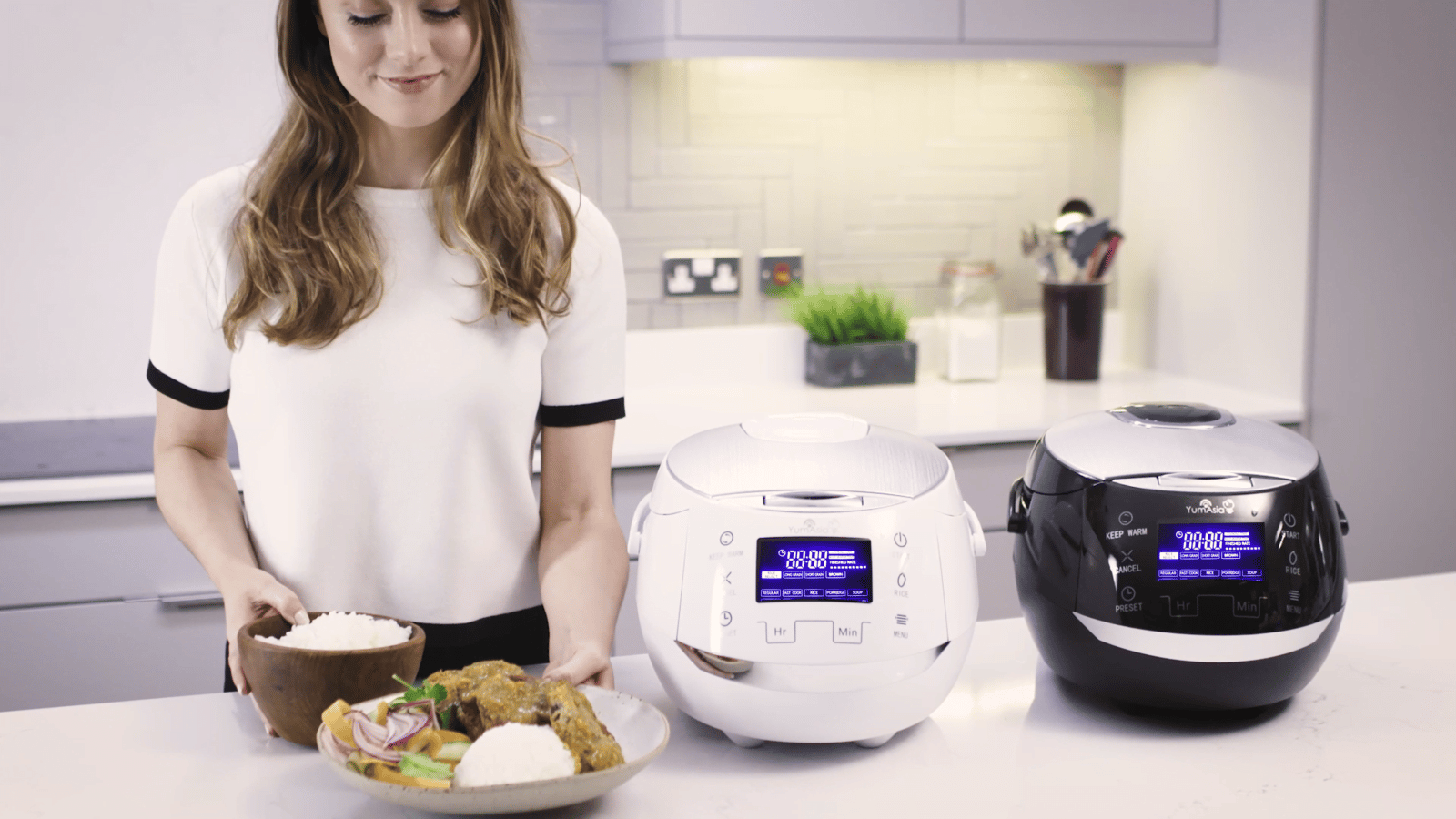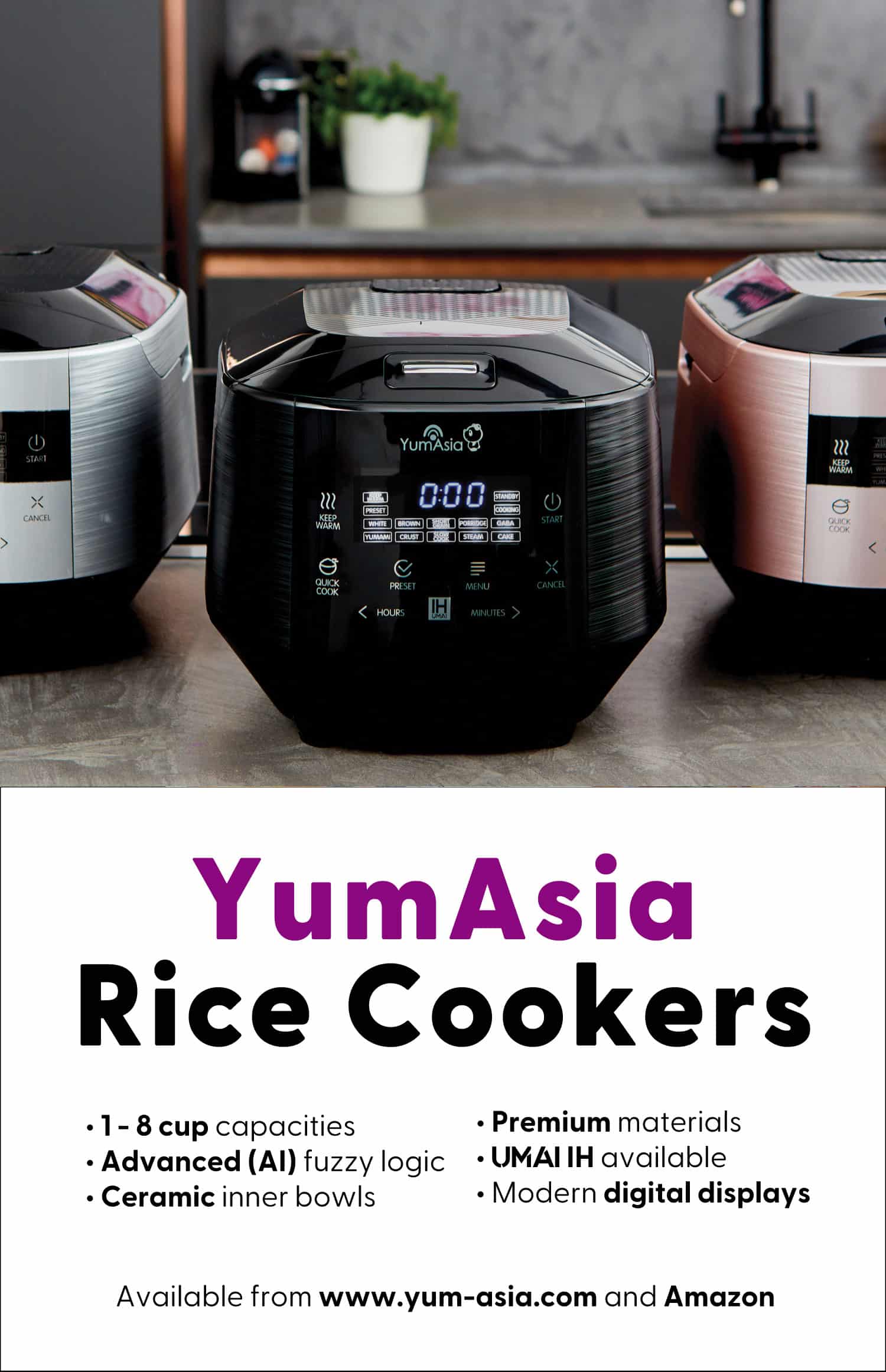Let us help guide you through the maze of rice cooker terminology, technology and jargon.
How a conventional (non-Micom Fuzzy Logic) Rice Cooker works
Rice cooker models available in the UK and Europe are usually non-Micom Fuzzy Logic models and if you take out the inner cooking pan and look inside the main body of the rice cooker, you will see a small round disk, about 3.8cm in diameter, in the centre of the heating plate. This is a thermal sensing device, known as a magnetic thermostat, and it sits on a small spring.
When rice and water is placed into the inner cooking pan and then put into the main body of the rice cooker, the weight of the inner cooking pan depresses the thermal sensor. With the rice cooker plugged in and the cooking switch turned on, the heating plate begins to heat up bringing the liquid in the cooking pan to a boil. Water boils at 100°C and no higher, so as long as there is water in the pan the rice cooker will continue to cook. When the rice absorbs all the water, the temperature will begin to rise since there isn’t any water left in the pan. When the thermal sensor senses that the temperature has risen above 100°C, the machine turns off the heater automatically.
This type of rice cooker is essentially an automated saucepan and common complaints are burnt or uneven cooked rice.
So what is unique and different about Micom Fuzzy Logic rice cookers?
In more advanced models, such as the majority of rice cooker models we sell, computer chip technology is introduced and the rice cooker automatically makes adjustments in temperature and cooking time depending upon the programme entered by the user. These cookers are called micom rice cookers because they are fitted with a micro-computer chip.
These rice cookers we sell utilise “fuzzy logic” through a micro computer chip to cook rice. This computer chip is the brains of the unit, making the cooking of rice foolproof. Instead of the cooker simply switching on and off reacting to temperature, the rice cooker now makes small adjustments in temperature and cooking time according to what the thermal sensor senses. With fuzzy logic it means you can also have different programmes for the rice cooker which include cooking white, sweet (glutinous), brown rice and porridge (both rice and oat varieties of porridge).
Additional features available with fuzzy logic models include cake baking (on the NS-TSQ10/18, Sakura), steaming function (on the NS-TSQ10/18, NL-AAQ10/18, Sakura YUM-EN15/W, Panda EN06, Kumo EY10/L) and slow cook (NS-YSQ10/18, Sakura YUM-EN15/W, Kumo EY10/L, Panda EN06), GABA brown rice, ‘premium’ taste for white rice (on NS-YSQ10/18). On our own branded rice cooker, Sakura we have added additional features of soup, crust (for Persian Tahdig style rice) and yoghurt.
What about Induction Heating models – how do they work?
Induction Heating (IH) in rice cookers occurs when coils in the bottom of the unit create a magnetic field. When the stainless steel inductive layer of the non-stick ceramic inner cooking bowl is placed into the rice cooker and the unit is activated, a magnetic field is generated to create instant heat throughout this layer. Through this technology, the inner cooking pan itself rather than the heating element becomes the heat source utilizing both even yet high heat and fine heat adjustments to control the cooking process.
Our Bamboo (YUM-IH15) model is the first Induction Heating rice cooker made for the UK and Europe.
For more information about Yum Asia’s Rice Cookers, please visit our store at www.yum-asia.com


























Leave a Reply